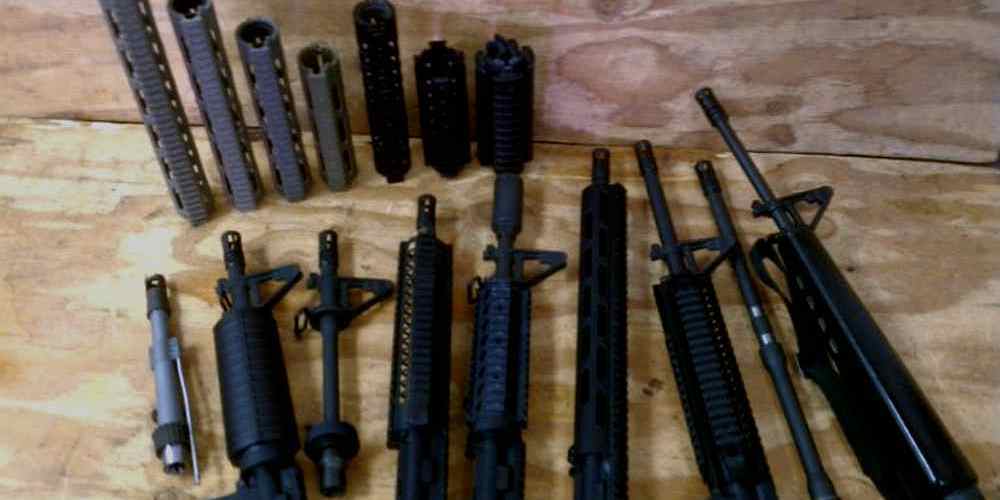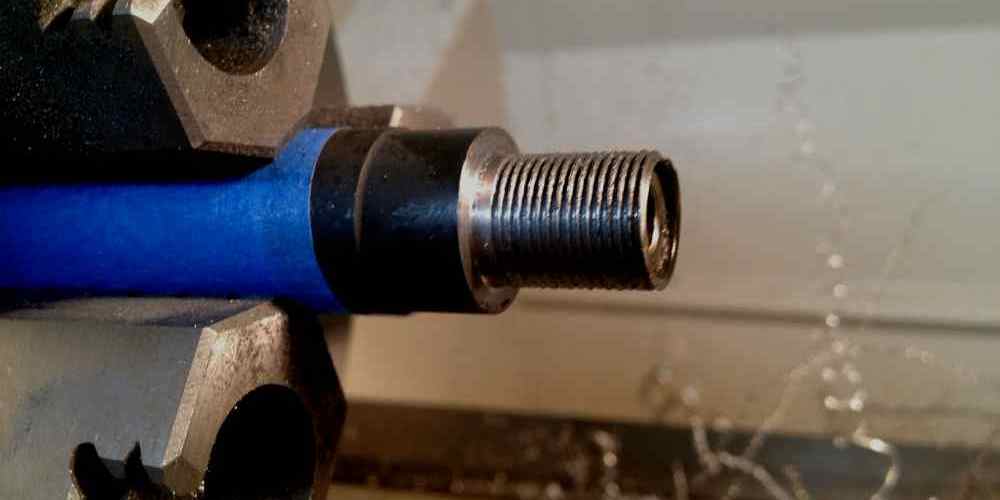“Barrel problems? We’ve got the solutions for your AR15.”
Barrel Fouling and Cleaning Techniques
When it comes to owning an AR15, one of the most important aspects to consider is the barrel. The barrel is the heart of the rifle, responsible for accuracy and overall performance. However, like any other component, AR15 barrels can encounter issues that may affect their functionality. One common problem that many AR15 owners face is barrel fouling.
Barrel fouling occurs when residue from ammunition builds up inside the barrel, affecting accuracy and potentially causing malfunctions. This can happen due to a variety of factors, such as using dirty ammunition or not cleaning the barrel regularly. If you notice a decrease in accuracy or consistency in your shots, it may be time to inspect your barrel for fouling.
To address barrel fouling, the first step is to thoroughly clean the barrel. Start by removing the upper receiver from the lower receiver and separating the barrel from the rest of the rifle. Use a cleaning rod with a bore brush and solvent to scrub the inside of the barrel. Make sure to run the brush through several times to dislodge any built-up residue. Follow up with a clean patch to remove any remaining debris.
After cleaning the barrel, it’s important to inspect it for any signs of damage or wear. Look for pitting, corrosion, or any other abnormalities that may affect the barrel’s performance. If you notice any issues, it may be necessary to replace the barrel to ensure optimal function.
In addition to regular cleaning, there are a few preventative measures you can take to minimize barrel fouling. One effective method is to use high-quality, clean ammunition. Dirty or low-quality ammo can leave behind more residue, leading to faster fouling. Additionally, using a bore snake or cleaning rod after each shooting session can help prevent buildup and maintain the barrel’s performance.
Another common issue with AR15 barrels is barrel wear. Over time, the rifling in the barrel can wear down, affecting accuracy and consistency. This can happen due to high round counts, using corrosive ammunition, or improper cleaning techniques. If you notice a decrease in accuracy or consistency, it may be time to inspect your barrel for wear.
To address barrel wear, the best course of action is to replace the barrel. While some minor wear may not significantly impact performance, more severe wear can lead to issues such as keyholing or poor grouping. When selecting a new barrel, consider factors such as barrel length, twist rate, and material to ensure optimal performance for your specific needs.
In conclusion, AR15 barrels are a critical component of the rifle that require regular maintenance and care to ensure optimal performance. By addressing common issues such as barrel fouling and wear, you can maintain accuracy and consistency in your shooting. Remember to clean your barrel regularly, use high-quality ammunition, and inspect for any signs of damage or wear. With proper care and attention, your AR15 barrel can provide years of reliable service.

Gas System Malfunctions and Solutions
Gas system malfunctions can be a frustrating issue for AR15 owners, as they can cause a variety of problems such as failure to cycle, inconsistent cycling, or excessive recoil. Understanding how the gas system works and being able to troubleshoot common issues can help you keep your AR15 running smoothly. In this section, we will discuss some common gas system malfunctions and provide solutions on how to fix them.
One of the most common gas system malfunctions is short-stroking, which occurs when the bolt carrier group does not travel back far enough to cycle the next round. This can be caused by a variety of factors, such as a dirty or fouled gas tube, an improperly adjusted gas block, or a weak buffer spring. To fix this issue, start by cleaning the gas tube and checking for any obstructions. If the gas tube is clear, check the gas block to ensure it is properly aligned and tightened. If the gas block is aligned correctly, try replacing the buffer spring with a heavier one to provide more resistance and help the bolt carrier group travel back further.
Another common gas system malfunction is over-gassing, which occurs when the rifle cycles too quickly and forcefully, causing excessive recoil and wear on the internal components. This can be caused by a gas block that is too large or a gas port that is too large. To fix this issue, start by checking the size of the gas block and gas port to ensure they are the correct size for your barrel length and ammunition. If they are too large, consider replacing them with smaller ones to reduce the amount of gas entering the system.
One more common gas system malfunction is gas leakage, which occurs when gas escapes from the gas block or gas tube, causing a loss of pressure and inconsistent cycling. This can be caused by a loose gas block, a damaged gas tube, or a faulty gas key on the bolt carrier group. To fix this issue, start by checking the gas block and gas tube for any signs of damage or wear. If they are in good condition, check the gas key on the bolt carrier group to ensure it is properly staked and tightened. If the gas key is loose or damaged, replace it with a new one to prevent gas leakage.
In conclusion, gas system malfunctions can be a common issue for AR15 owners, but with some basic troubleshooting and maintenance, they can be easily fixed. By understanding how the gas system works and being able to identify common issues, you can keep your AR15 running smoothly and reliably. Remember to regularly clean and inspect your gas system components to prevent malfunctions and ensure optimal performance. If you encounter any persistent issues, don’t hesitate to seek help from a qualified gunsmith or firearms expert. With a little knowledge and care, you can keep your AR15 in top condition for years to come.
Accuracy Issues and Barrel Maintenance
The AR15 is a popular rifle known for its accuracy and reliability. However, like any firearm, it can experience issues that affect its performance. One common problem that AR15 owners encounter is accuracy issues with their barrels. In this article, we will discuss some common issues with AR15 barrels and how to fix them.
One of the most common accuracy issues with AR15 barrels is barrel fouling. Over time, carbon and copper fouling can build up in the barrel, affecting the rifle’s accuracy. To fix this issue, it is important to regularly clean your barrel using a bore brush and solvent. Make sure to follow the manufacturer’s recommendations for cleaning to ensure that you do not damage the barrel.
Another common issue that can affect accuracy is barrel wear. As the barrel wears down, it can lose its rifling, which is essential for accuracy. To fix this issue, you may need to replace the barrel. It is important to regularly inspect your barrel for signs of wear and replace it as needed to maintain accuracy.
In addition to barrel fouling and wear, another common issue that can affect accuracy is barrel alignment. If the barrel is not properly aligned with the receiver, it can cause the rifle to shoot off target. To fix this issue, you may need to have a gunsmith check the alignment of your barrel and make any necessary adjustments.
It is also important to regularly check the crown of your barrel. The crown is the end of the barrel where the bullet exits, and any damage to the crown can affect accuracy. To fix this issue, you may need to have a gunsmith recrown your barrel or replace it if necessary.
In addition to accuracy issues, it is important to properly maintain your AR15 barrel to ensure its longevity. One important aspect of barrel maintenance is proper storage. Make sure to store your rifle in a cool, dry place to prevent rust and corrosion. It is also important to regularly inspect your barrel for signs of wear and damage and address any issues promptly.
Another important aspect of barrel maintenance is proper lubrication. Make sure to regularly lubricate your barrel to prevent wear and ensure smooth operation. It is important to use a high-quality gun oil or grease that is specifically designed for firearms to prevent damage to the barrel.
In conclusion, troubleshooting common issues with AR15 barrels is essential for maintaining accuracy and reliability. By regularly cleaning your barrel, checking for wear and alignment issues, and properly maintaining your rifle, you can ensure that your AR15 performs at its best. If you encounter any issues with your barrel, it is important to address them promptly to prevent further damage. By following these tips, you can keep your AR15 in top condition for years to come.
Barrel Nut and Gas Block Installation Tips
When it comes to troubleshooting common issues with AR15 barrels, one of the key areas to focus on is the barrel nut and gas block installation. Proper installation of these components is crucial for the overall performance and reliability of your rifle. In this article, we will discuss some tips and techniques for installing the barrel nut and gas block correctly, as well as how to fix any issues that may arise during the process.
First and foremost, it is important to ensure that the barrel nut is properly torqued to the manufacturer’s specifications. This will help prevent any issues with the barrel coming loose during firing, which can lead to accuracy problems and potential safety hazards. To achieve the correct torque, use a torque wrench and follow the instructions provided by the manufacturer. It is also a good idea to use a quality barrel nut wrench to ensure that the nut is tightened evenly and securely.
Another common issue that can arise during barrel nut installation is alignment problems. If the barrel nut is not properly aligned with the gas tube hole in the upper receiver, it can cause gas leakage and cycling issues. To avoid this, make sure to carefully align the barrel nut with the gas tube hole before tightening it down. You can use a gas tube alignment tool to help with this process, ensuring that everything is lined up correctly.
Once the barrel nut is properly installed, it is time to move on to the gas block installation. The gas block plays a crucial role in regulating the flow of gas from the barrel to the bolt carrier group, so it is important to ensure that it is installed correctly. Make sure to use a quality gas block that is compatible with your barrel and gas system. It is also important to use the correct size roll pin to secure the gas block in place, as using the wrong size can lead to issues with gas leakage and cycling problems.
If you encounter any issues during the gas block installation, such as alignment problems or difficulty securing the roll pin, there are a few troubleshooting steps you can take. First, double-check that the gas block is properly aligned with the gas port on the barrel. If it is not aligned correctly, you may need to remove the gas block and reposition it before securing it in place. Additionally, if you are having trouble with the roll pin, you can try using a roll pin starter punch to help guide it into place.
In conclusion, proper installation of the barrel nut and gas block is essential for the performance and reliability of your AR15 rifle. By following the tips and techniques outlined in this article, you can ensure that these components are installed correctly and avoid any common issues that may arise. If you do encounter any problems during the installation process, don’t hesitate to reach out to a professional gunsmith for assistance. With the right tools and techniques, you can troubleshoot and fix any issues with your AR15 barrel and gas system, ensuring that your rifle performs at its best.
Troubleshooting Barrel Leaks and Gas Block Alignment
If you own an AR15 rifle, you know how important it is to keep your firearm in top working condition. One common issue that AR15 owners may encounter is barrel leaks and gas block alignment problems. These issues can affect the performance and accuracy of your rifle, so it’s essential to address them promptly. In this article, we will discuss how to troubleshoot and fix common barrel leaks and gas block alignment issues with your AR15.
Barrel leaks can occur for a variety of reasons, including improper installation, wear and tear, or damage to the barrel itself. One of the most common signs of a barrel leak is a decrease in accuracy or consistency when firing your rifle. If you notice that your shots are not hitting the target as they should, it may be due to a leak in the barrel.
To troubleshoot a barrel leak, start by inspecting the barrel for any visible signs of damage or wear. Look for cracks, dents, or other abnormalities that could be causing the leak. If you find any damage, it may be necessary to replace the barrel to fix the issue.
Another common cause of barrel leaks is improper installation. If the barrel is not properly seated in the upper receiver, it can lead to gas escaping and affecting the performance of the rifle. To fix this issue, ensure that the barrel is securely attached to the upper receiver and that all components are properly aligned.
Gas block alignment problems can also affect the performance of your AR15 rifle. The gas block is responsible for regulating the flow of gas from the barrel to the bolt carrier group, which cycles the action of the rifle. If the gas block is misaligned, it can cause malfunctions such as failure to eject or failure to feed.
To troubleshoot gas block alignment issues, start by checking the alignment of the gas block with the gas port on the barrel. If the gas block is not properly aligned, it may need to be adjusted or replaced to ensure proper function. You can use a gas block alignment tool to help you align the gas block correctly.
Another common issue with gas block alignment is gas leakage. If you notice gas escaping from the gas block or around the gas tube, it may be due to a loose or improperly sealed gas block. To fix this issue, tighten any loose screws or replace any damaged components to prevent gas leakage.
In conclusion, troubleshooting common issues with AR15 barrels, such as leaks and gas block alignment problems, is essential for maintaining the performance and accuracy of your rifle. By inspecting the barrel for damage, ensuring proper installation, and checking gas block alignment, you can address these issues and keep your AR15 in top working condition. If you encounter any persistent issues that you are unable to fix on your own, it may be necessary to seek professional help from a gunsmith or firearms expert. By taking care of your AR15 rifle and addressing any issues promptly, you can enjoy reliable performance and accuracy every time you fire your weapon.








